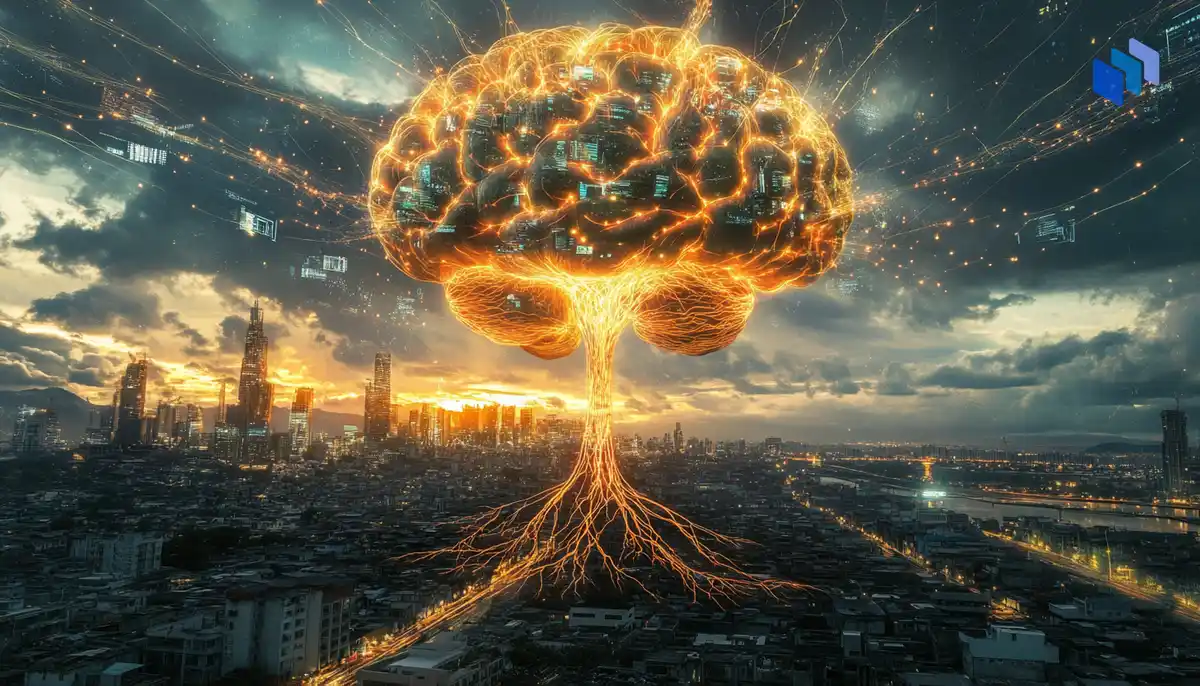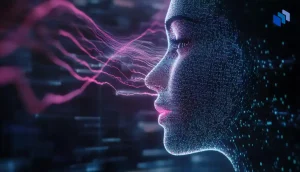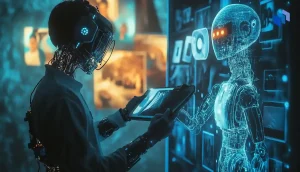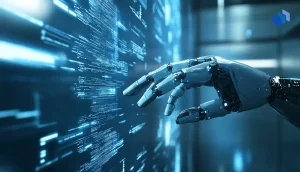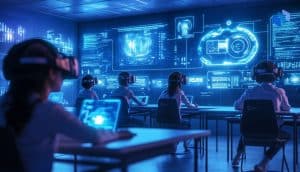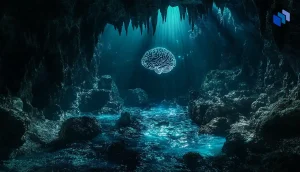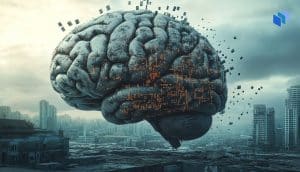How will AI change the world? Who can give us the answers? Anthropic CEO Dario Amodei recently posted a mammoth essay on his blog detailing his thoughts on how AI could radically transform five significant areas of humanity in the next 5-10 years: biology and health, neuroscience and mind, economic development and poverty, peace and governance, and work and meaning.
In this article, we look at what the future of generative AI might look like. Should we expect a terrifying dystopia or a harmonious utopia?
Key Takeaways
- Dario Amodei predicts that Artificial General Intelligence (AGI) could emerge by 2026, surpassing human intellect in most fields and revolutionizing problem-solving capabilities.
- AI has the potential to radically transform various sectors, including healthcare, economics, and governance. Breakthroughs are anticipated in as little as 5-10 years.
- Amodei highlights societal and technological constraints, such as laws and data limitations, as key obstacles that could hinder AI’s progress,
- Anthropic CEO stresses the importance of balanced AI development, where thoughtful management is key to ensuring AI is a force for good rather than a source of existential risk.
AI Future: An Existential Threat or the Answer to All the World’s Problems?
Some believe that AI’s trajectory and pace of development are catapulting humanity towards its demise. These doomers fear the ‘singularity’ is imminent and that unstoppable superintelligence will be the most pressing existential threat since the atomic bomb.
On the other end of the spectrum are those who believe AI is the answer to all of the world’s problems. These propagandists champion innovation, often at the expense of satisfactory risk management, while taking every opportunity to distract from the potential hazards.
AI predictions are a dime a dozen, and these two camps represent the extreme ends of the debate. Somewhere in between lies a more balanced and rigorous forecast that isn’t characterized by unhelpful alarmism or blind optimism.
Some believe an ideal future exists where AI drives medical advances, economic growth, and world peace without plunging humanity into chaos.
‘Machines of Loving Grace’
In his essay, for example, Amodei suggests that by accelerating the entire research process, not just data analysis, future innovations in the healthcare sector could extend lifespan, enhance control over biological processes, eliminate diseases, and tackle problems with the human condition that were once deemed immutable. Despite challenges like data quality, Amodei boldly predicts that AI could deliver 50-100 years of biological progress within 5-10 years.
According to Amodei, “powerful AI,” by which he means AGI, could come as early as 2026. This level of intelligence will not only equal human intellect but will be “smarter than a Nobel prize winner across most relevant fields,” including “biology, programming, math, engineering, writing, etc.”
While generative AI is currently underperforming in mathematics and is currently a long way off from supplanting fiction writers, powerful AI will be able to “prove unsolved mathematical theorems, write extremely good novels, [and] write difficult codebases from scratch.”
Amodei summarizes this techno-phenomenon as a “country of geniuses in a data center.”
What Could Hinder the AI Utopia?
You might not be surprised by Amodei’s assessment that one of the greatest obstacles to AI’s speedy evolution in the coming years is humans and their clunky, inefficient processes.
These constraints, or “bottlenecks,” include:
- the speed at which materials can be produced could restrict the scaling process
- lack of experimental and observational data
- and societal constraints such as human laws and social norms
The combination of these factors, alongside AI’s insurmountable inability to overcome things like fundamental physical limits, will, according to Amodei, stand between the full potential of an AI-driven future.
Although Amodei’s techno-utopian bent is on full display throughout the essay, he is sober-minded about the dangers that could counteract wholesome progress.
From the get-go, he states: “I think that most people are underestimating just how radical the upside of AI could be, just as I think most people are underestimating how bad the risks could be.”
Underpinning his reason for writing “Machines of Loving Grace” is the incentive for humanity to choose the path of light, to work together for the best possible outcomes, and to avoid drowning in cynicism directed at a technology that is here to stay:
“Many of the implications of powerful AI are adversarial or dangerous, but at the end of it all, there has to be something we’re fighting for, some positive-sum outcome where everyone is better off, something to rally people to rise above their squabbles and confront the challenges ahead. Fear is one kind of motivator, but it’s not enough: we need hope as well.”
Advocates & Critics
You can’t be Dario Amodei, write a 15,000-word essay on a topic as disputed as the future of AI, and not expect X to erupt with a wide range of responses.
Matt Clancy, creator of New Things Under The Sun, called the essay “nice” before raising concerns about the reasonableness of Amodei’s claims and over-reliance on speculation.
My best guess at what’s going on is that we lack sufficiently developed theories to rigorously forecast anything and so we have to guess at everything.
We then fall back on our intuitions about what kinds of guesses feel reasonable. And intuitions are hard to update.
— Matt Clancy (@mattsclancy) October 13, 2024
Similarly, essayist and creator of The Scholar’s Stage, Tanner Greer, expressed a hint of admiration before stating that some crucial elements of the essay don’t fully align with reality:
I appreciate Dario’s willingness to explicitly lay out what he foresees AGI to look like.
However, there are projections in this essay that I think are conceptually flawed—or at least very underdeveloped. https://t.co/Kdg5hpwsxI
— T. Greer (@Scholars_Stage) October 12, 2024
Amodei does seem to anticipate these reactions, admitting that “no one can know the future with any certainty or precision” and that “the effects of powerful AI are likely to be even more unpredictable than past technological changes, so all of this is unavoidably going to consist of guesses.”
He acknowledges that while his observations could be wrong, he has at least provided “educated and useful guesses, which capture the flavor of what will happen even if most details end up being wrong.”
The Emergence of the ‘AI Church’
Engineer and essayist Stephen Pimentel notes the increasing parallels between the paths of Anthropic and OpenAI, seemingly championing the similarities:
“This is the beginning of Anthropic’s OpenAI arc. I don’t mean that in a bad way.”
In a somewhat derisive response to Pimentel, writer and social theorist James Poulos said: “This church will fail.”
Poulos’s choice of language is interesting.
Amodei, however, warns against framing AI development in grandiose and religious ways:
“I think it’s dangerous to view companies as unilaterally shaping the world, and dangerous to view practical technological goals in essentially religious terms.”
While Amodei rejects what he perceives to be the unilateral, messianic approach of some individuals or companies, emphasizing a more collaborative and humble effort to ensure AI is beneficial to society, it is difficult not to imagine him as a kind of prophet delivering a vision of a utopian future, where the possibilities border on the miraculous.
As one X user jovially but nonetheless astutely remarked:
“Machines of Loving Grace” by Dario Amodei = the first official epistle for the new AI religion.
— DataSurfer (@Data56738) October 12, 2024
Putting religion aside, Adomei is an optimist, and as Derya Unutmaz, professor of immunology at The Jackson Laboratory for Genomic Medicine, said: “The optimists will win.”
Here’s a prediction:
The next decade will be a major struggle between constantly critical, fear-mongering pessimists and visionary, builder optimists.
And the optimists will win. 🦾🚀🖖🏻
— Derya Unutmaz, MD (@DeryaTR_) October 13, 2024
What will 2030 look like? Will AGI be a reality? No one really knows, but we might hope Amodei’s forecast is correct.
The Bottom Line
Amidst an excess of AI future predictions, Amodei’s essay sheds light on the most pressing issue: not whether AGI will be a blessing or a curse, but how its careful development and management will be integral to securing positive outcomes.
Whether every guess is proven to be entirely correct, his optimistic yet cautious vision is a refreshing alternative to fear-mongering or blind faith in technology.
FAQs
What is predicted for AI in 2025?
What will AI look like by 2050?
How smart will AI be in 5 years?
References
- Dario Amodei — Machines of Loving Grace (Dario Amodei)
- Apple Says Generative AI Isn’t Good At Math (Forbes)
- AI has mastered the art of terrible writing (The Times)
- New Things Under the Sun (New Things Under the Sun)
- Matt Clancy on X (X)
- Matt Clancy on X (X)
- About the Author – The Scholar’s Stage (Scholars Stage)
- T. Greer on X (X)
- Stephen Pimentel on X (X)
- James Poulos on X (X)
- DataSurfer on X (X)
- Derya Unutmaz, MD on X (X)
